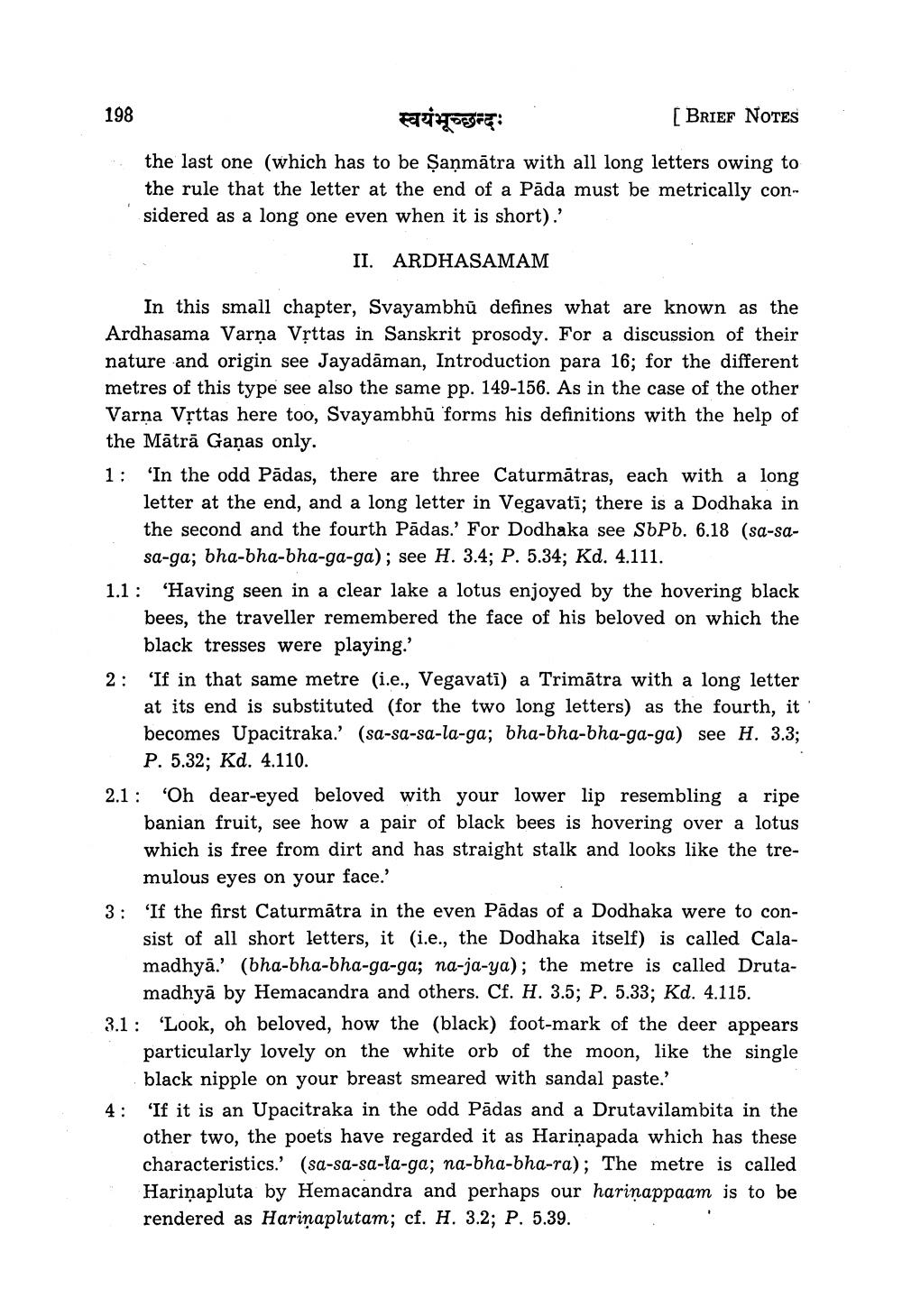________________
198
In this small chapter, Svayambhu defines what are known as the Ardhasama Varna Vrttas in Sanskrit prosody. For a discussion of their nature and origin see Jayadāman, Introduction para 16; for the different metres of this type see also the same pp. 149-156. As in the case of the other Varna Vṛttas here too, Svayambhu forms his definitions with the help of the Mātrā Gaņas only.
स्वयंभूच्छन्दः
[BRIEF NOTES
the last one (which has to be Ṣaņmātra with all long letters owing to the rule that the letter at the end of a Pada must be metrically considered as a long one even when it is short).'
II. ARDHASAMAM
1: 'In the odd Pādas, there are three Caturmatras, each with a long
letter at the end, and a long letter in Vegavati; there is a Dodhaka in the second and the fourth Pādas.' For Dodhaka see SbPb. 6.18 (sa-sasa-ga; bha-bha-bha-ga-ga); see H. 3.4; P. 5.34; Kd. 4.111.
1.1 'Having seen in a clear lake a lotus enjoyed by the hovering black bees, the traveller remembered the face of his beloved on which the black tresses were playing.'
2:
'If in that same metre (i.e., Vegavati) a Trimātra with a long letter at its end is substituted (for the two long letters) as the fourth, it' becomes Upacitraka.' (sa-sa-sa-la-ga; bha-bha-bha-ga-ga) see H. 3.3; P. 5.32; Kd. 4.110.
2.1:
'Oh dear-eyed beloved with your lower lip resembling a ripe banian fruit, see how a pair of black bees is hovering over a lotus which is free from dirt and has straight stalk and looks like the tremulous eyes on your face.'
3: 'If the first Caturmatra in the even Pādas of a Dodhaka were to consist of all short letters, it (i.e., the Dodhaka itself) is called Calamadhya.' (bha-bha-bha-ga-ga; na-ja-ya); the metre is called Drutamadhyā by Hemacandra and others. Cf. H. 3.5; P. 5.33; Kd. 4.115.
4:
3.1 'Look, oh beloved, how the (black) foot-mark of the deer appears particularly lovely on the white orb of the moon, like the single black nipple on your breast smeared with sandal paste.'
'If it is an Upacitraka in the odd Pādas and a Drutavilambita in the other two, the poets have regarded it as Hariņapada which has these characteristics.' (sa-sa-sa-la-ga; na-bha-bha-ra); The metre is called Harinapluta by Hemacandra and perhaps our harinappaam is to be rendered as Harinaplutam; cf. H. 3.2; P. 5.39.




